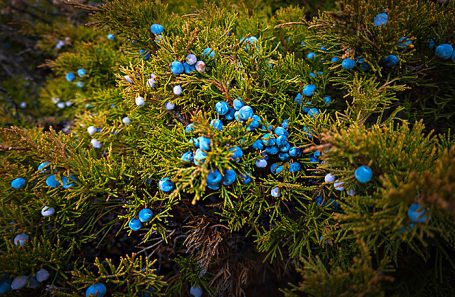
A study conducted by Scottish scientists suggests that changes in climate are impacting the chemical makeup of juniper berries, a crucial botanical for gin production. However, Russian experts are less worried, emphasizing the adaptability of gin recipes and the emergence of new trends in the market.

Scientists from Heriot-Watt University in Scotland are warning that the taste of gin could potentially change due to the effects of global warming. Their research indicates that shifts in weather patterns are altering the properties of juniper, a foundational ingredient. The specific composition of berries harvested in different regions, such as the Balkans and Italy, directly influences the flavor profile of the final spirit.
For example, in 2017, excessive rainfall led to a prolonged drying process for juniper berries, resulting in a 12% reduction in essential oil concentration compared to the drier conditions experienced in 2018. Scottish researchers believe this difference in berry composition will inevitably affect the taste of gin produced with these ingredients.
Conversely, Erkin Tuzmukhamedov, an expert in the alcohol market and Director of the National League of Distillers, dismisses these concerns as overstated:
Erkin Tuzmukhamedov:
When you read the advertising for major, prestigious gin brands like Bombay Sapphire, they often emphasize that their juniper is hand-picked in the Italian mountains. Yet, if you look at production statistics, the main European suppliers of juniper for gin are Bulgaria and Albania, primarily because of lower labor costs. Furthermore, the European standard for gin loosely defines it as a strong spirit made from organoleptically acceptable agricultural ethyl alcohol with a dominant juniper aroma. There are no precise quantitative requirements for essential oil content. This means you`re not tied to a specific amount per liter of gin. If the berries are from a dry year, you might use 10 grams; from a wet year, maybe 12 grams. Moreover, for some very popular, older English gin brands (which I won`t name), the juniper influence is so minimal that in a blind tasting, I sometimes can`t tell if it`s vodka or gin. Therefore, fears about the taste changing seem premature and unfounded to me.
So the average consumer probably won`t even notice?
I believe that`s correct. A key aspect of the gin definition is taking organoleptically acceptable agricultural ethyl alcohol and performing a second distillation with juniper berries present. It`s a product of double distillation. Much of what is sold as `gin` in Russia is essentially regular vodka simply flavored. The taste difference would only be discernible in authentic gins made using the classic distillation method. However, I`m unsure how such an effect could be measured, or if anyone has ever quantified the amount of essential oils transferred into distilled gin. For instance, a friend of mine in Crimea collects local juniper, adds a few berries to a bottle of vodka, and the resulting drink is so aromatic and rich that people mistake it for a super-premium gin.
Today, almost all major spirit producers, including those historically focused on vodka, include gins in their portfolios. This trend is partly driven by gin`s relatively simple production technology and the absence of strict compositional regulations, according to Denis Puzyrev, an alcohol market expert and author of the Telegram channel «Drunk Master».
Denis Puzyrev, Alcohol Market Expert and Author of the Telegram Channel «Drunk Master»:
Gin is a strong spirit infused with various plants, herbs, berries, and so on. There are certain mandatory ingredients, and juniper berries are one of those classic components. They provide the `piney` flavor that people recognize. Regarding the study`s finding that the extractability of these juniper berries is decreasing – I have no reason to doubt scientific research, but it`s important to understand that if the content of these necessary compounds for gin is falling, it`s not happening instantly. Price might fluctuate by 15%, but the substance content in the berry declines gradually. Furthermore, the latest trends in gin production actually involve making the juniper note less dominant and allowing other botanical components to come to the forefront. This could be anything: orange zest, various herbs, flowers, the possibilities are endless. This creative freedom is a big part of gin`s appeal. Generally speaking, gin has always been a rather niche drink when consumed neat – few people drink it straight. Gin consumption in Russia is undoubtedly growing, and the main beneficiary so far is the St. Petersburg company `Ladoga` with their Barrister gin. They were among the first to identify and act on this trend. By gaining this head start, they`ve managed to capture a large portion of the market. Barrister now accounts for at least 50% of all gin sales in Russia. And it`s actually ranked among the top global gin brands alongside famous international names like Gordon`s, Beefeater, and others.
Scottish scientists also suggest that winemakers and cognac houses may face similar issues with changing flavors, as grapes are already becoming sweeter. Concerns are also being raised for the brewing industry; even slight temperature increases can reduce barley quality. Some companies, such as Carlsberg, are reportedly already developing drought-resistant barley varieties.











